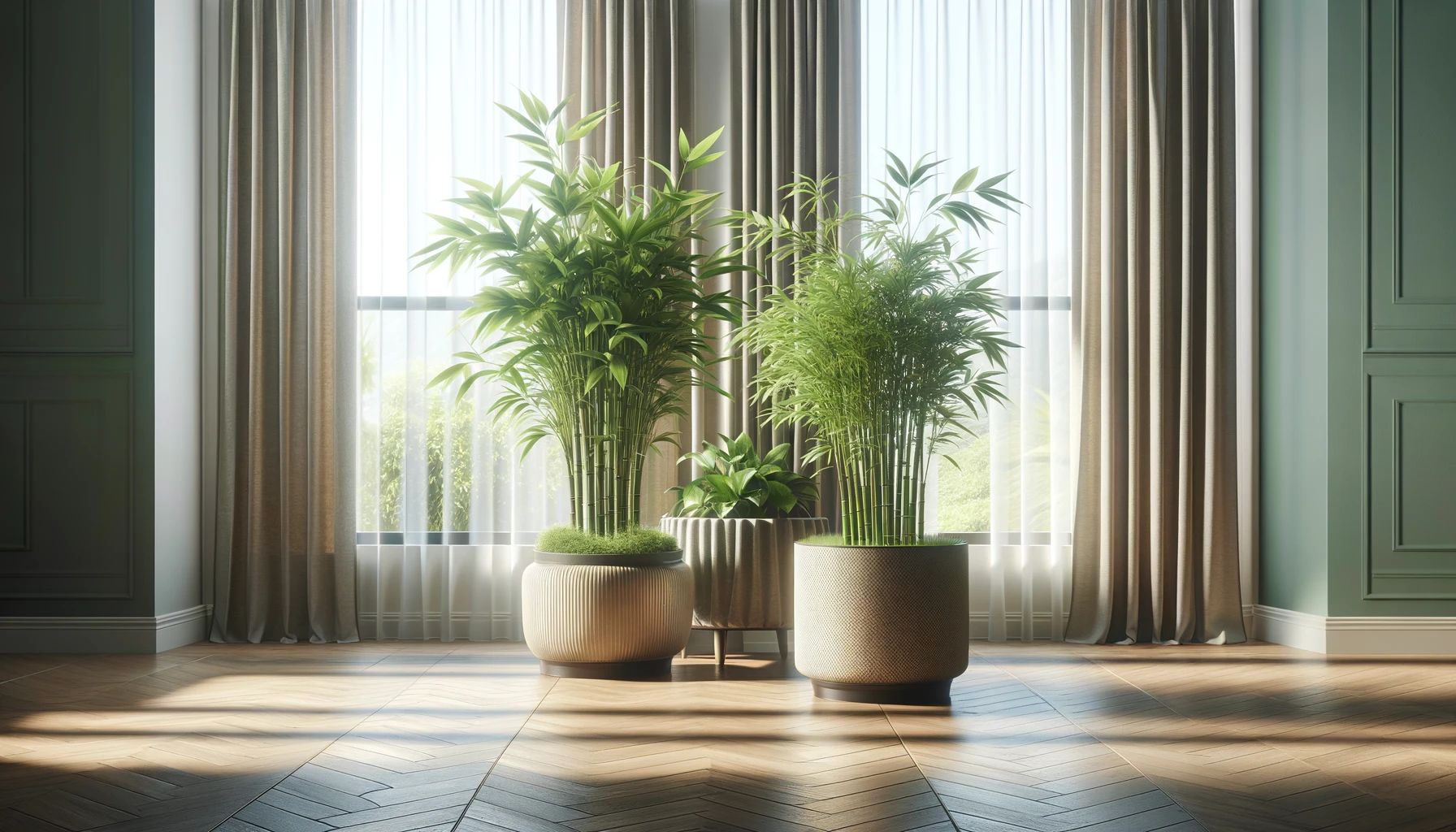We use affiliate links. If you purchase something using one of these links, we may receive compensation or commission.
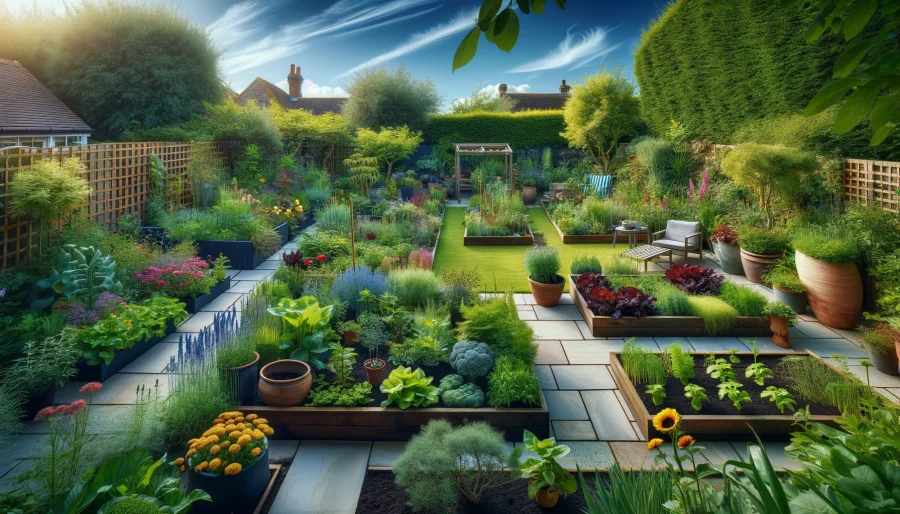
Discover the joys of expanding and evolving your backyard garden!
Learn how to transform your outdoor space into a beautiful, productive oasis with our expert tips.
Expanding Your Backyard Garden Key Takeaways:
- Expanding your backyard garden involves assessing your current space.
- Planning a new layout, and incorporating a variety of plants and features.
- You can create a flourishing garden by introducing new elements and making the most of your available space.
Are you ready to take your outdoor space to the next level?
Expanding your backyard garden can become a vibrant sanctuary for relaxation and enjoyment.
Expanding and Evolving Your Backyard Garden
Are you considering starting a backyard garden but not sure where to begin?
Explore the numerous benefits of having a backyard garden, what you need to get started, and the essential tools and plants for gardening.
Learn how to prepare your backyard for gardening, maintain your garden, and even how to expand and evolve your garden space.
Whether you are a beginner or a seasoned gardener, there is something for everyone to learn and enjoy in this comprehensive guide.
Why Start a Backyard Garden?
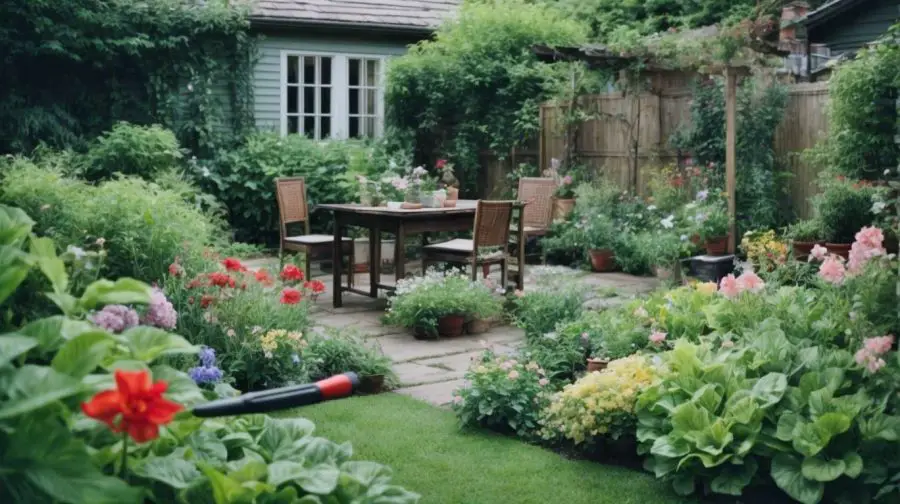
Starting a backyard garden can be a rewarding and fulfilling experience for individuals looking to connect with nature, grow their own produce, and create a beautiful outdoor space.
There is a unique joy that comes from witnessing the growth and flourishing of plants you have nurtured from tiny seeds.
The simple act of tending to a garden can bring a sense of peace and satisfaction, allowing you to escape the hustle and bustle of daily life.
The health benefits of harvesting your own homegrown vegetables are numerous – you have full control over the use of pesticides.
You can enjoy fresh, nutrient-rich produce straight from your garden to your table.
By cultivating a garden, you contribute positively to the ecosystem, creating a small haven for beneficial insects, birds, and other wildlife.
Embracing gardening as a hobby not only enriches your life but also helps to sustain biodiversity and promote a more sustainable way of living.
What Are the Benefits of Having a Backyard Garden?
Having a backyard garden offers numerous advantages, including access to fresh produce, the opportunity to engage in physical activity, and the chance to create a sustainable and eco-friendly environment in your own home.
One of the most rewarding aspects of tending to a backyard garden is the sheer convenience of having homegrown vegetables at your fingertips.
Imagine stepping outside your door and picking ripe tomatoes, crisp cucumbers, or vibrant bell peppers for your meals.
Not only does this provide a sense of accomplishment, but it also guarantees the freshness and nutritional quality of your produce.
Gardening activities such as digging, planting, and harvesting also offer a fantastic way to stay active and promote physical wellness, which can be especially beneficial for those managing conditions like diabetes.
What Do You Need to Start a Backyard Garden?
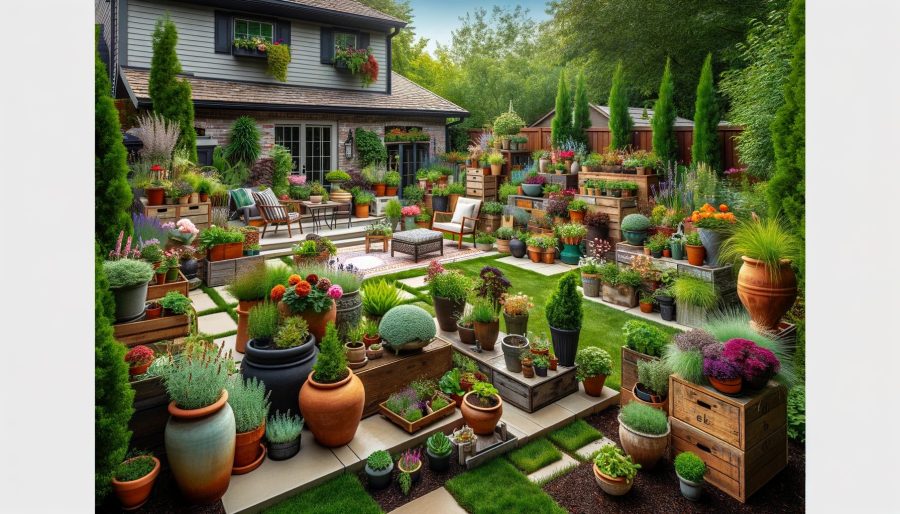
To start a backyard garden, you will need essential tools such as trowels, pruners, watering cans, and gloves to ensure proper care and maintenance of your plants.
Trowels are necessary for planting small plants and digging up soil, providing you with ease and precision while planting your garden.
Pruners help in trimming and cutting unwanted branches, encouraging healthy growth, and shaping your plants.
Watering cans are critical for providing the right amount of water to your plants, ensuring they stay hydrated and healthy.
Lastly, gloves protect your hands from dirt, thorns, and other potential hazards while working in the garden, keeping your hands safe and clean.
What Are the Essential Tools for Gardening?
The essential tools for gardening include trowels, pruners, gloves, and watering cans, which are critical for planting, pruning, watering, and overall maintenance of your garden.
Plus these basics, other essential gardening tools are weeders, hand forks, and secateurs.
Weeders help in removing weeds from the root, while hand forks are great for aerating soil and loosening debris.
Secateurs, also known as pruning shears, are perfect for precision cutting of small branches and stems.
In terms of caring for your plants, a soil pH tester is a handy tool to check the acidity or alkalinity of your soil, ensuring optimal growing conditions.
Plant stakes and ties provide support for tall or climbing plants, helping them grow upright and strong.
Maintaining your tools is crucial for their longevity.
Clean and dry your tools after each use to prevent rust or corrosion.
Sharpen blades regularly to ensure clean cuts, and oil metal parts to prevent sticking.
What Are the Best Plants to Grow in a Backyard Garden?
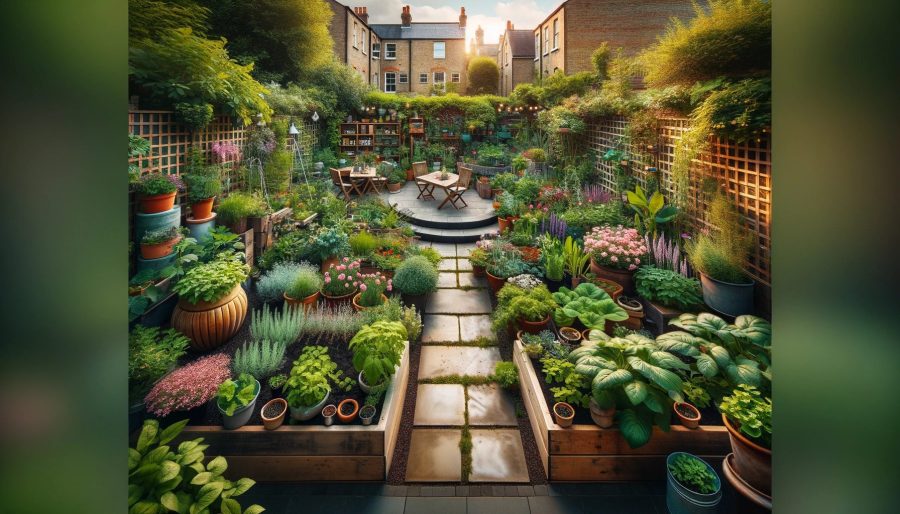
Choosing the best plants for your backyard garden depends on factors such as climate, soil quality, and personal preferences, but popular options include tomatoes, peppers, herbs, and flowers.
Tomatoes are ideal for sunny spots with well-drained soil, needing ample sunlight and regular watering to thrive.
Peppers, like tomatoes, also require plenty of sunlight but can tolerate slightly cooler temperatures.
Herbs such as basil, mint, and rosemary are versatile additions, needing well-drained soil and moderate watering.
- In terms of flowers, roses are classic choices known for their beauty and fragrance, requiring full sun and regular pruning for optimal growth.
- Other popular flower options like marigolds and zinnias are colorful additions that attract pollinators, needing well-drained soil and moderate watering.
What Are the Different Types of Garden Beds?
Garden beds come in various types such as raised beds, container gardens, and traditional in-ground beds, each offering unique advantages in terms of space utilization, soil quality, and plant organization.
Raised beds are favored for their ability to prevent soil compaction and promote better drainage, ideal for vegetables and herbs that require well-drained soil. Additionally,
- container gardens are excellent for small spaces, allowing flexibility in placement and creating a visually appealing arrangement.
- On the other hand, traditional in-ground beds provide plants with direct access to the earth, making them suitable for deep-rooted crops like carrots and potatoes.
How Can You Build Your Own Garden Bed?
Building your own garden bed is a rewarding DIY project that involves selecting a location, preparing the soil, constructing the bed frame, and filling it with nutrient-rich soil for optimal plant growth.
First, when choosing a location for your garden bed, consider factors like sunlight exposure, drainage, and proximity to water sources.
Next, decide on the construction materials; options range from wood to metal to recycled materials.
Construct the bed frame by assembling the chosen materials into the desired shape, ensuring sturdiness and proper size for the plants you intend to grow.
Prepare the soil by mixing in compost, aged manure, peat moss, and other organic matter to create a fertile environment for your plants.
Once the bed is filled with the enriched soil, it’s time to plant your seeds or seedlings, spacing them appropriately and watering them gently.
How to Prepare Your Backyard for Gardening?
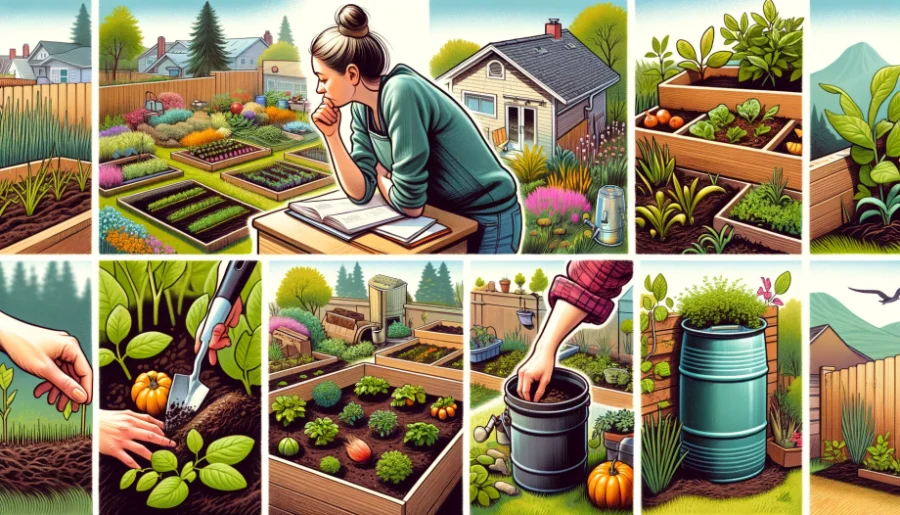
Preparing your backyard for gardening involves clearing the area of debris, assessing soil quality, amending the soil with organic matter, and creating a suitable environment for plant growth.
Once you have cleared the debris, the next crucial step is soil testing to determine its composition.
You can opt for DIY testing kits or consult a professional for a comprehensive analysis.
Based on the results, you can proceed to enrich the soil by adding nutrients like compost, peat moss, or aged manure, tailored to address deficiencies.
Consider the pH of the soil and adjust it with lime or sulfur to create optimal growing conditions.
Remember, healthy soil is the foundation for a thriving garden!
What Are the Steps for Clearing and Preparing the Soil?
Clearing and preparing the soil for gardening involves removing weeds, loosening compacted soil, adding compost or fertilizer, and creating a suitable planting environment for your chosen plants.
To begin with, weed removal is crucial to prevent competition for nutrients and space with your desired plants.
Pull out weeds by hand or use tools like a hoe, ensuring you remove the roots to prevent regrowth.
After clearing weeds, the next step is soil aeration, which involves breaking up compacted soil to improve water drainage and root penetration.
You can aerate the soil by tilling or using a garden fork to loosen the earth.
How to Choose the Right Plants for Your Backyard Garden?
Selecting the right plants for your backyard garden involves considering factors such as climate, sunlight exposure, soil quality, and personal preferences to ensure optimal growth and productivity.
When choosing plants, it’s crucial to match them with your local climate conditions – some thrive in hot, arid climates while others require more rainfall.
Understanding the sunlight exposure in your garden area is key; some plants love full sun, while others prefer shade.
Soil quality plays a significant role in plant health – certain plants need well-draining soil, while others thrive in moist environments.
Taking your personal preferences into account will make your garden visually appealing and enjoyable to care for.
How to Maintain Your Backyard Garden?
Maintaining your backyard garden involves regular watering, fertilizing, weeding, and monitoring plant health to ensure vibrant growth and bountiful harvests.
One key aspect of maintaining your garden is establishing a regular watering schedule tailored to your plant’s specific needs.
Different plants require varying amounts of water, so it’s essential to research the water requirements of each species in your garden.
Consider investing in a soaker hose or drip irrigation system to efficiently deliver water to the roots while minimizing evaporation.
In terms of fertilizer application, aim for a balanced approach.
Use a slow-release fertilizer to provide nutrients gradually or opt for organic options like compost and manure.
These organic alternatives not only nourish the soil but also promote beneficial microbial activity.
What Are the Best Practices for Watering and Fertilizing?
Implementing best practices for watering and fertilizing your garden involves providing consistent moisture, using organic fertilizers, and following a balanced approach to nourishing your plants effectively.
In terms of watering your garden, one crucial aspect is to water deeply but infrequently to encourage deep root growth, enhancing the plant’s resilience to drought.
Consider investing in a drip irrigation system or soaker hoses to deliver water directly to the plant roots and minimize evaporation.
Be mindful of the specific water needs of different plant varieties in your garden and adjust your watering schedule accordingly.
How to Deal with Pests and Diseases in Your Garden?
Managing pests and diseases in your garden requires early detection, natural remedies, and preventive measures to protect plants from common threats and maintain a healthy growing environment.
One key aspect of pest and disease management is regularly inspecting plants for any signs of infestation or illness.
Keep a close eye on leaves, stems, and fruits for irregularities or abnormal growth patterns.
Identifying the specific pest or disease affecting your plants is crucial in determining the most effective treatment.
For instance, certain insects can be controlled through natural predators or beneficial insects that prey on them, reducing the need for chemical interventions.
Implementing crop rotation and proper spacing between plants can also help minimize the spread of diseases.
How to Prune and Harvest Your Plants?
Pruning and harvesting your plants at the right time is essential for plant health and productivity, promoting new growth, preventing disease, and maximizing yields from your garden.
Regular pruning helps remove dead or overgrown branches, allowing more sunlight and air circulation to reach the plant, which is crucial for its overall health.
By trimming back excess growth, plants can allocate their resources more efficiently, leading to better fruit and flower production.
Proper harvesting practices ensure that fruits and vegetables are picked at peak ripeness, enhancing both flavor and nutritional value.
How to Expand and Evolve Your Backyard Garden?
Expanding and evolving your backyard garden allows you to experiment with new plant varieties, design elements, and gardening techniques to enhance the beauty and productivity of your outdoor space.
One effective strategy for garden expansion is to regularly explore innovative plant introductions.
Consider introducing native species that are well-suited to your local climate and soil conditions.
These plants often require less maintenance and are more resilient, contributing to a sustainable garden ecosystem.
Modifying the layout of your garden can create new focal points and enhance visual interest.
Experiment with creating pathways, adding seating areas, or installing vertical gardens to maximize space utilization and create a dynamic and inviting atmosphere.
Integrating creative enhancements such as water features, bird feeders, or artistic garden sculptures can elevate the aesthetic appeal of your backyard oasis and attract beneficial wildlife to contribute to a thriving garden ecosystem.
What Are Some Creative Ways to Expand Your Garden Space?
Exploring creative ways to expand your garden space can include vertical gardening, container gardening, trellises, raised beds, and utilizing underutilized areas for planting, maximizing your growing potential.
Vertical gardening is a fantastic method to make the most of limited space by growing plants upwards on walls or structures, saving ground space.
Container gardening allows you to cultivate plants in small or unconventional areas like balconies, patios, or windowsills.
Incorporating trellises not only adds aesthetic appeal but also offers support for climbing plants without encroaching on ground space.
Raised beds provide depth for root growth and make planting and maintenance more accessible.
Don’t overlook areas like fences, railings, or vertical structures that can be transformed into lush green spaces.
How Can You Introduce New Plants and Varieties to Your Garden?
Introducing new plants and varieties to your garden can bring diversity, beauty, and culinary adventures, allowing you to experiment with different species, colors, flavors, and growth habits.
When considering adding new plant species to your backyard oasis, think about the overall aesthetic you wish to achieve.
Mixing in plants with various textures, heights, and bloom times can create a visually dynamic and balanced landscape.
Additionally, diversifying your plant collection helps attract a wider range of beneficial insects, birds, and pollinators, promoting a healthier ecosystem in your garden.
- When selecting new plants, pay attention to their growing requirements such as sunlight, soil type, and water needs to ensure they thrive in their new environment.
- Planting techniques may vary depending on the species, but generally, proper spacing, soil preparation, and watering are essential for successful establishment.
- Adding a variety of colorful blooms can provide year-round interest and seasonal excitement as different flowers take their turn to shine.
Expanding and Evolving Your Backyard Garden FAQs
If you’re thinking about expanding and evolving your backyard garden, you might have some questions about where to start and how to make the most of your space.
Below, we’ve compiled a list of frequently asked questions to help you navigate the process of transforming your garden into a thriving, beautiful outdoor sanctuary.
Q: How do I completely redo my garden?
A: To completely redo your garden, start by assessing your current layout and identifying what you’d like to change.
Consider factors such as sunlight, soil quality, and your desired plants.
Remove any unwanted elements, improve the soil, and design a new layout that suits your needs and preferences.
Q: Can you turn your entire yard into a garden?
A: Yes, you can turn your entire yard into a garden. Plan the layout carefully, considering pathways, seating areas, and plant placement.
Utilize vertical space and raised beds to maximize growing areas.
Incorporate a variety of plants, including vegetables, herbs, flowers, and shrubs, to create a diverse and productive garden.
Q: How do you transform an old garden?
A: To transform an old garden, start by clearing out overgrown or unwanted plants.
Assess the soil quality and make necessary improvements.
Introduce new plants that suit your climate and design preferences.
Add features like paths, water elements, or garden art to enhance the space’s visual appeal.
Q: How can I maximize my backyard garden?
A: Maximize your backyard garden by utilizing vertical space with trellises or wall planters, incorporating raised beds for efficient use of space, and selecting plants with varying heights and growth habits.
Rotate crops to keep the soil healthy and plan your planting to ensure continuous harvest throughout the seasons.
Q: What adds the most value to a garden?
A: Adding features such as well-designed landscaping, outdoor living spaces, water features, and mature trees can significantly increase the value of a garden.
Incorporating low-maintenance and native plants can also enhance the appeal and sustainability of the space.
Q: What is the most space-efficient garden layout?
A: The most space-efficient garden layout is often a square-foot gardening layout, which divides the garden into small square sections to maximize planting space.
Vertical gardening and raised beds are also effective ways to use limited space efficiently.
Q: What are some benefits of expanding and evolving my backyard garden?
A: Expanding and evolving your backyard garden can increase your home’s curb appeal, provide fresh and organic produce for your family, and create a peaceful and enjoyable outdoor space for you to relax in.
Q: How can I expand my backyard garden?
A: There are a few ways to expand your backyard garden, such as adding raised beds, using vertical gardening techniques, or utilizing unused spaces like a small corner or wall.
Q: What are some tips for evolving my backyard garden?
A: To evolve your backyard garden, you can try experimenting with new plants, incorporating different design elements, or implementing sustainable gardening practices like composting and using rainwater.
Q: What should I consider before expanding my backyard garden?
A: Before expanding your backyard garden, it is important to assess the amount of space, sunlight, and water availability in your backyard.
You should also consider your gardening goals and the time and effort you are willing to invest.
Q: How can I keep my backyard garden evolving throughout the seasons?
A: To keep your backyard garden evolving throughout the seasons, you can plan for a variety of plants that thrive in different weather conditions.
You can also incorporate seasonal decorations and implement a regular maintenance routine.
Q: Are there any resources available to help with expanding and evolving my backyard garden?
A: Yes, there are many resources available such as gardening books, online tutorials, and local gardening communities that can provide tips, advice, and support for expanding and evolving your backyard garden.
Growing Your Garden Conclusion
Embracing Change in Your Garden
Expanding and evolving your backyard garden is a journey of continuous improvement and discovery.
Embrace the changes and enjoy the process of creating a space that reflects your personal style and meets your gardening goals.
The Joy of Gardening
Gardening is more than just a hobby; it’s a way to connect with nature, improve your well-being, and create a beautiful and productive space.
Take pride in your evolving garden and the positive impact it has on your life and the environment.
A Sustainable Future
As you expand and evolve your garden, consider incorporating sustainable practices such as composting, water conservation, and using organic methods.
These practices not only benefit your garden but also contribute to a healthier planet.
Community and Sharing
Share your gardening journey with friends, family, and the community.
Whether it’s through social media, garden tours, or simply inviting others to enjoy your garden, sharing your experiences can inspire and encourage others to start their own gardening adventures.
Continued Learning and Growth
Gardening is a lifelong learning experience.
There’s always something new to discover, whether it’s a new plant variety, a different gardening technique, or a creative design idea.
Stay curious and open to new possibilities as you continue to expand and evolve your backyard garden.
Learn more: Backyard Gardening: A Comprehensive Guide
Looking Forward
As you look to the future, think about the next steps in your gardening journey.
Whether it’s adding new plants, redesigning your garden layout, or exploring new gardening styles, there are endless possibilities for growth and creativity.
Keep dreaming and planning for an even more beautiful and bountiful garden in the years to come.
Happy Gardening!




